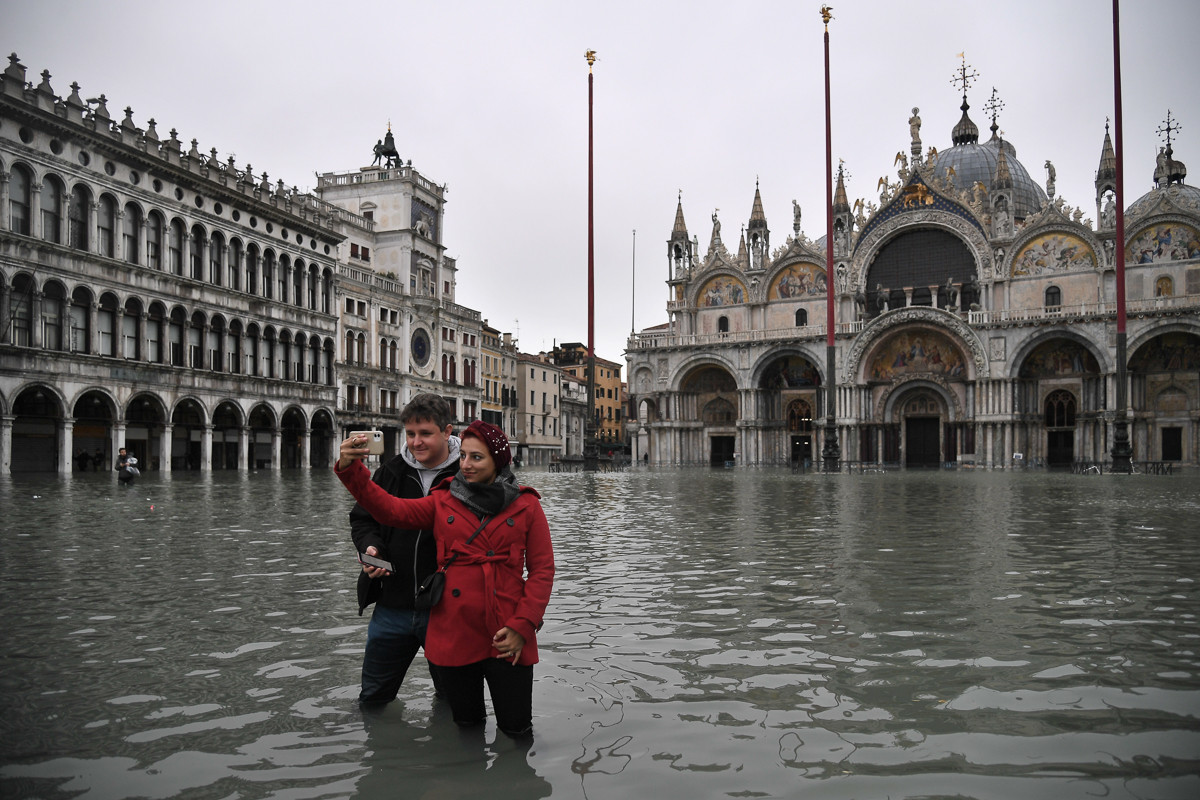Photo Credit: Marco Bertorello / AFP
The last few weeks have seen some shocking images and headline reports of life-threatening situations around the world: the wildfires in Australia and the flooding in Venice and Northern England. In the aftermath of such events, those affected rely on several layers of assistance to help rebuild their lives and businesses.
Communicating with both those impacted and those who have a part in restoring critical infrastructure, communities, homes and businesses is pivotal. This will continue beyond the headlines, so getting it right from Day One can go a long way in this rebuilding process.
At the core of the early stages of a crisis threatening lives and/or property are those stakeholders in the impact zone: householders, businesses, public services. The emergency services have the responsibility of alerting and coordinating assistance, along with the relevant local authorities. Often the biggest challenges they face are the speed and unpredictability of weather-related events. Combined with the understandable emotional response victims of such events feel, these challenges can lead to fear, despair, anxiety and anger. If you are a stakeholder in such a disruptive event, getting communications right at this early stage cannot be underscored enough.
A mandatory element of any contingency planning is a crisis communications plan. The three crucial considerations to remember during the early stages of a potentially life-threatening, disruptive event are:
- Actions and tone: Multiple stakeholders will be mobilising and activating plans and many conversations will be taking place. The first point of potential failure during this time is not to acknowledge the most important stakeholders AND what immediate actions they need to take. This applies even when the situation on the ground may not be clear, e.g. evacuate, move critical goods and property to safety, pack grab bags, alert staff, etc. Getting accurate and clear information to pass on to the people most directly impacted is imperative, both to provide them with immediate guidance and direction and to remove them from danger. The correct tone is also vital. This needs to acknowledge the anxiety, fear and uncertainty many will feel, as well as engage with those who may resist any guidance given. Clarity, empathy and necessity are the watchwords.
- Blame game: As anger sets in, those impacted begin to ask who or what is responsible. This is a very natural reaction, yet the priority is to ensure people and property are out of danger as much as possible and to provide immediate assistance to those directly affected. A full analysis of such disruptive events is normally conducted post-event, so it is important to focus on the immediate needs of those impacted and not get drawn into what may have contributed to the events until afterwards.
- Track and follow up: Those impacted will need a lot of support post-event. Once the immediate threat to life and property has subsided and the headlines have moved on, tracking the emotional and practical responses of all stakeholders is fundamental to successful communications during the recovery phase. In tandem with this, communications should include the messages and signposts to organisations and assistance on how people can start rebuilding their lives. It is extremely important that this continues and that all challenges and delays are managed in a transparent and swift manner. Failure to do so may see the story return to the headlines.

